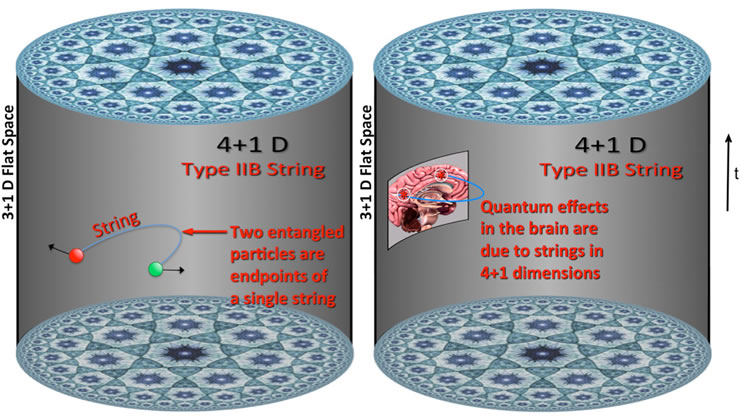The Brain-Based Approach to Peace
(a.k.a. the Consciousness-Based Approach to Peace)
Theoretical Foundation
Accessing the unified field: neurological mechanisms
The precise neurological mechanisms that underlie the brain’s ability to experientially access the unified field are rather sophisticated, and lie somewhat beyond the scope of this summary. Briefly, it is increasingly postulated by researchers studying the neuroscience of consciousness that quantum mechanics plays a pivotal role in the phenomenon of consciousness—i.e., that without quantum-mechanical effects in the brain, the intrinsic liveliness of experience we call “consciousness” would simply not exist.
However, even assuming such quantum-mechanical effects in the brain, it might seem a stretch to further assert that the unified field, which resides at a time and distance scale a million-million-million-million times smaller than ordinary quantum mechanics (see Figure 1, previous page), could be in any sense relevant to the brain, and thus in any sense relevant to consciousness.
Here, the latest understandings from string theory may offer important new insight. In a series of remarkable theoretical developments, it has been shown that wherever quantum mechanics is present (e.g., in brain processes associated with consciousness), the unified field is equally present. I.e., wherever quantum mechanics plays a role, string theory equally plays a role.
The key feature of quantum-mechanical behavior is known as quantum entanglement—the mysterious property by which separated particles (or separated quantum systems) remain perpetually connected, even over vast distances. This connection is mysterious because there is no possible physical connection that links them within the causal structure of 3+1 dimensional space-time. But string theory coupled with AdS/CFT gauge-gravity duality (“holographic duality”) explains that while no such physical connection exists in 3+1 dimensions, from a higher-dimensional (4+1 D) perspective, the separated entangled quantum particles are, in fact, two end-points of a single superstring. Thus, from a higher-dimensional perspective, the mystery of long-range “invisible” entanglement is substantially resolved.

Figure 3. Separated entangled particles in 3+1 dimensions are simply two endpoints of a single string from the higher-dimensional perspective of string theory in 4+1 dimensions (left). Similarly, quantum effects in the brain, including certain neuronal quantum effects hypothetically associated with consciousness, can likewise be seen as string-theoretic phenomena—as phenomena of the unified field (right).
More generally, phenomena that were previously understood as quantum-mechanical processes at the atomic or molecular scale can now be equivalently viewed as string-theoretic phenomena—as phenomena of the unified field.
It follows directly that if consciousness has its biological roots in quantum-mechanical phenomena at the molecular-neuronal scale of the brain (as many neuroscientists now believe), one can equivalently say that consciousness has its roots in string theory—i.e., that consciousness is a phenomenon of the unified field.
It is therefore less surprising, neurophysiologically, that consciousness, as it explores and gains intimate familiarity with its own fundamental nature during deep meditation, is likewise gaining intimate familiarity with—and direct contact with—the unified field.

